Segment your audience and personalize emails to boost relevance and engagement.
Use personalized content, strong subject lines, and A/B testing to improve open and click rates.
Streamline workflows with automation and trigger-based emails for timely communication.
Maintain a clean list and follow best practices to protect deliverability and mobile performance.
Your customers’ inboxes are probably stuffed with other marketers’ work. Unfortunately, it’s easy to get lost in the shuffle. Not every email will be opened, and even fewer will result in conversions. Yet despite this, email marketing remains one of the most effective marketing methods.
So, the question is: how do you ensure that more of your brand’s emails cut through customers’ crowded inboxes to see the light of day?
The key is to be strategic about your email campaign approach.
This article will show you how to use these simple marketing strategies to your advantage, whether you're a large enterprise, a startup, or small business.

Even with SMS, social media, and affiliate options crowding the landscape, email still delivers the best ROI—$36 for every $1 spent among all digital marketing tactics. The global email marketing market is projected to more than double from $7.5 billion in 2020 to $17.9 billion by 2027, yet only 25% of companies believe they’re adequately measuring their email marketing ROI (this may come from not using adequate email marketing analytics tools, or not optimizing how you are using said tools.).

That’s a huge gap—and a massive opportunity. The teams that measure, test, and design with intent are the ones winning. Let’s make sure you’re one of them.
9 Email Marketing Strategies That Drive Growth
There’s no shortage of email marketing strategies out there, but the most effective ones are data-backed methods designed to boost open and conversion rates. These strategies go beyond surface-level tips. They address real issues like messaging relevance, email list hygiene, and unsubscribe rates. When executed well, they help you tailor your email marketing campaigns to better resonate with your target audience’s demographics and behaviors.
Of course, every brand’s approach will vary depending on product positioning and goals, but these tactics are built to be flexible. So let’s dive into five high-impact strategies you can start using to improve your next email campaign.
1. Define Your Business Goals
Defining clear business goals is the foundation of successful email marketing campaigns. These goals help align your messaging with each stage of the customer journey and keep your email marketing software focused on outcomes that matter.
Whether you're aiming to convert new subscribers, nurture potential customers, or drive retention, your objectives should reflect broader marketing KPIs. Having measurable goals to guide your campaign strategy will make it easier to streamline your efforts and prove ROI.
Start with one core goal per campaign, such as increasing demo signups or reducing churn, and tracking progress using relevant metrics like CTR or CLV. Revisit and refine these goals quarterly to ensure alignment with your overall content marketing strategy.
2. Segment Your Audience
Email segmentation, you’ll find, is very appropriately named, as it describes the process. It ensures that each message you send reaches the right potential customers at the right moment in their customer journey. In my experience, well-segmented lists consistently outperform bulk sends across every metric, including open rates, CTR, and conversions. According to Mailchimp, segmented campaigns have a 14.31% higher open rate and also a 100.95% higher click rate than non-segmented ones (Mailchimp, 2023).
Targeting the right audience allows you to personalize your content marketing and reduce unsubscribes. Use your email marketing software to tag users based on behavior, location, or lifecycle stage. Then tailor content for each segment to increase relevance and campaign performance.
3. Personalize your emails
The rise of data analytics has transformed best practices across sectors, and email marketing is no exception. Companies now have a repository of detailed information on customers’ purchase histories and brand interactions, meaning businesses can now create profiles on individual customers. So, make sure you’re leveraging this information by customizing your outgoing messaging to better target the interests of the specific recipient.
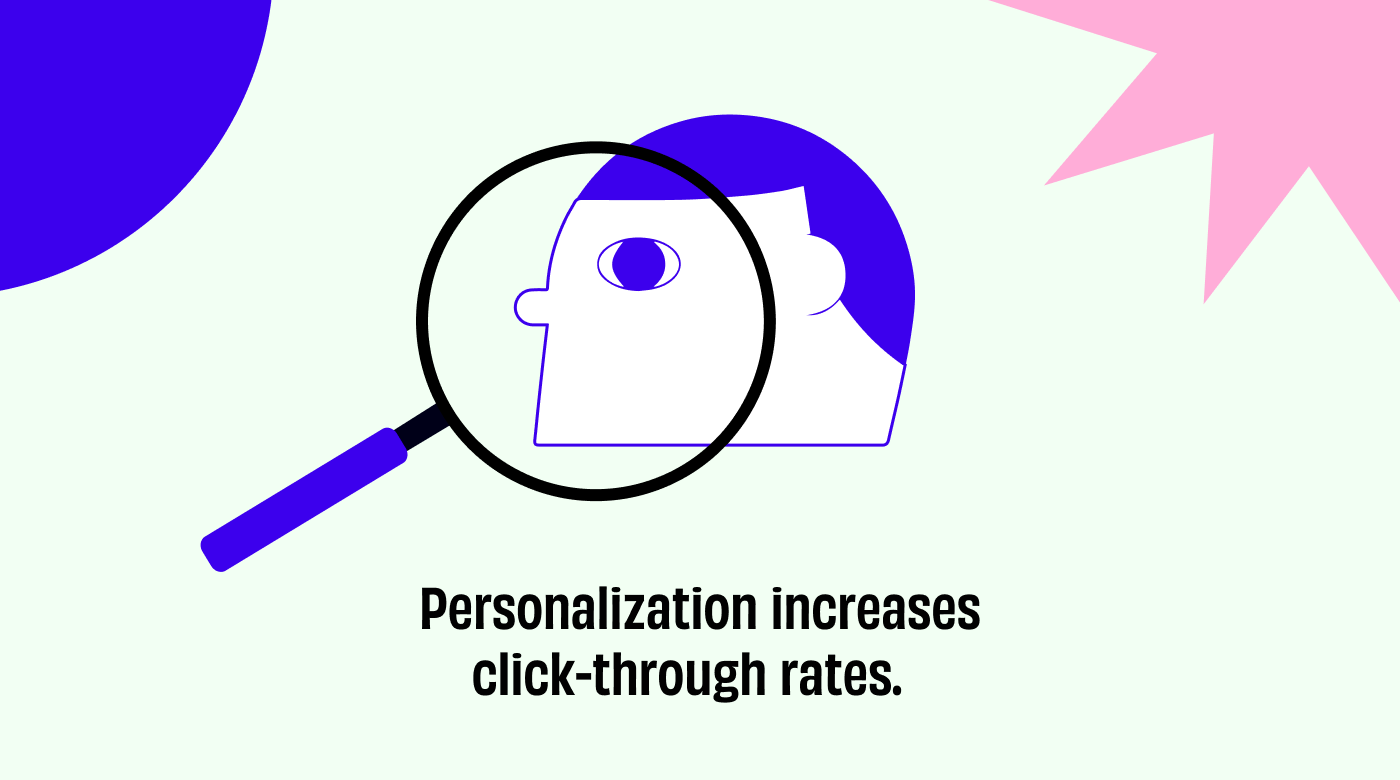
Personalization often boils down to customizing product suggestions, offers, coupons, or promotions using the collected data on a subscriber’s interests. This practice has been shown to significantly improve critical KPIs like click-throughs, unsubscribe rates, and conversions as the content of your branded communications feels more important, direct, and relevant to the customer.

Although of course, I’m not the first person to come up with personalization. In fact, you might already be doing a degree of mass data-backed customization. This is because the efficacy of the practice, particularly in increasing click-through rates, has led to widespread adoption among marketers. In fact, 89% of surveyed marketers see a positive ROI when they use personalization strategies in their campaigns.
Customers too have adapted to the new normality, with 71% of them reporting that they expect personalization.

The results of personalization, when done well, can be astonishing. For example, SCI Solutions was experiencing difficulty cutting through the oversaturated seller market for medical software. So, in response, their marketing team developed a trigger-based campaign plan that incorporated high levels of both internal and external data on their prospects. The goal was to build trust over multiple months.
The SCI team created a lead scorecard that calculated the behavior-based triggers against personal data to create a score, which would then determine the level of engagement required for the resulting product offering in the next email they received. As a result of this personalization effort, SCI was able to derive a significant response increase and a resulting growth in opportunities.
Here are some of SCI Solution’s personalized email examples, note how each product offering is different:
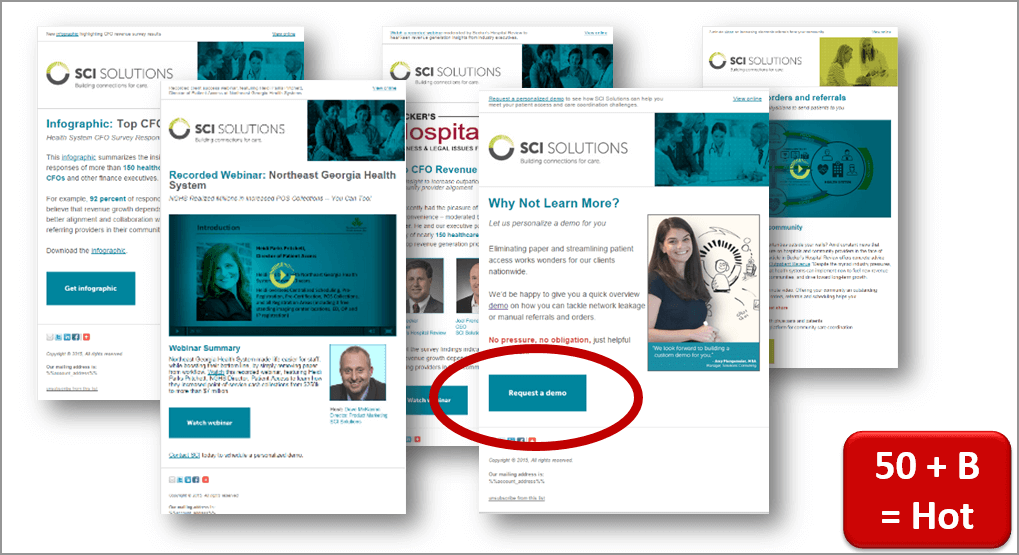
2. Improve your performance with A/B testing
A/B is the process of testing out an alteration of one variable in a marketing email, analyzing the results, and repeating the process to find the optimal design. This approach allows marketers to play with different elements of their email or campaign structure and come up with fact-based results.

Ecommerce email marketing strategists often use A/B testing to find the most impactful version of features like subject lines, copy, and the placement of certain elements like CTAs within an email. A/B testing has a plethora of uses when it comes to increasing conversions and engagement. Email marketers can also use A/B testing to boost factors like their web traffic and conversion rates while decreasing negative outcomes like cart abandonment and bounce rates. Basically, the testing format allows you to isolate any conceivable individual design factor and improve it.

To illustrate how variation testing can lead companies to hone in on the most engaging version of their marketing materials, check out the differences between Humana’s landing page banner “control” and its successful “treatment” below. Through this A/B tested redesign, Humana managed to increase their click through rate on their landing page banner by 433%.
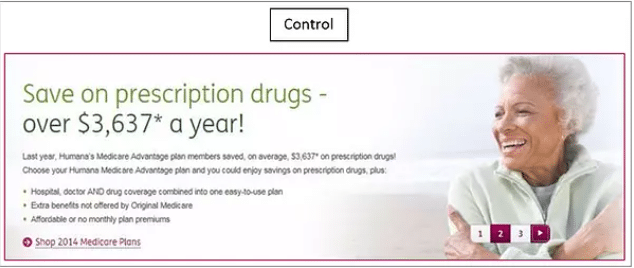

The fact of the matter is that there’s no way to know what elements of your email design could be dragging down your campaign ROI without measuring the efficacy of each factor. A/B testing is one of the most cost-effective ways to track and analyze data regarding your customers’ response to your campaign, which is why 75% of the top 500 internet retailers use it.
So if you’re sold on the importance of A/B testing, here’s a step-by-step guide.
Here’s how you run an A/B test:Here’s how you can run an A/B test:
- Keep testing regularly to refine messaging and reach your audience at the right time.
- To improve open rates and email deliverability, start A/B testing with a clear goal like comparing subject lines or send times.
- Test both versions simultaneously to control for timing variables and ensure accuracy.
- Use your email marketing software to evenly split your list and track performance.
- Focus your analysis on the metric you set out to improve, whether that’s opens, clicks, or conversions.
5. Automate your Email Workflows
Automation helps you scale your outreach while staying personal and timely—crucial for engaging growing lists of email subscribers. Using the right email marketing tools, you can build workflows that handle everything from onboarding sequences to re-engagement campaigns, all without manual effort. According to one study, automated emails generate 320% more revenue than non-automated emails.
Many email marketing software provide email templates that make it easy to stay on-brand and CRM integration ensures every message reflects where a contact is in their customer journey. Whether nurturing leads or sending regular email newsletters, automation helps streamline the process and improve consistency.
Set up Trigger-based Emails
Set up trigger-based emails to be sent automatically when a subscriber takes a specific action like signing up for your list, abandoning a cart, or clicking a link in a previous campaign.
These real-time messages consistently outperform batch sends in both engagement and conversion metrics. In fact, Forrester reports that trigger-based email campaigns 4X more revenue and 18X more profit compared to traditional campaigns.
Use your CRM and email marketing tools to define key triggers—such as page views, inactivity, or milestone dates—and connect them to strategic points in your email workflows.
6. Maintain a clean email list
A clean email list protects your sender reputation, improves deliverability, and ensures your email campaigns reach people who actually want to hear from you. Over time, inactive subscribers, bounced emails, and fake sign-ups can clog your list and drag down your performance metrics.
To prevent this, start with clear, well-placed opt-in sign-up forms that set expectations and attract qualified leads.
Regularly audit your list by removing hard bounces and disengaged contacts, and consider setting up re-engagement campaigns before purging inactive subscribers.
For existing customers, make sure your CRM syncs accurately so you’re not emailing outdated or irrelevant contacts. The cleaner your list, the better your engagement—and the stronger your sender reputation across every campaign.
7. Make your emails mobile-friendly
Many of your customers access their inboxes through their mobile devices. In fact, most of them do, as evidenced by Apple iPhone’s rank as #1 in email market share. Despite this, many companies still aren’t sending mobile-friendly emails.
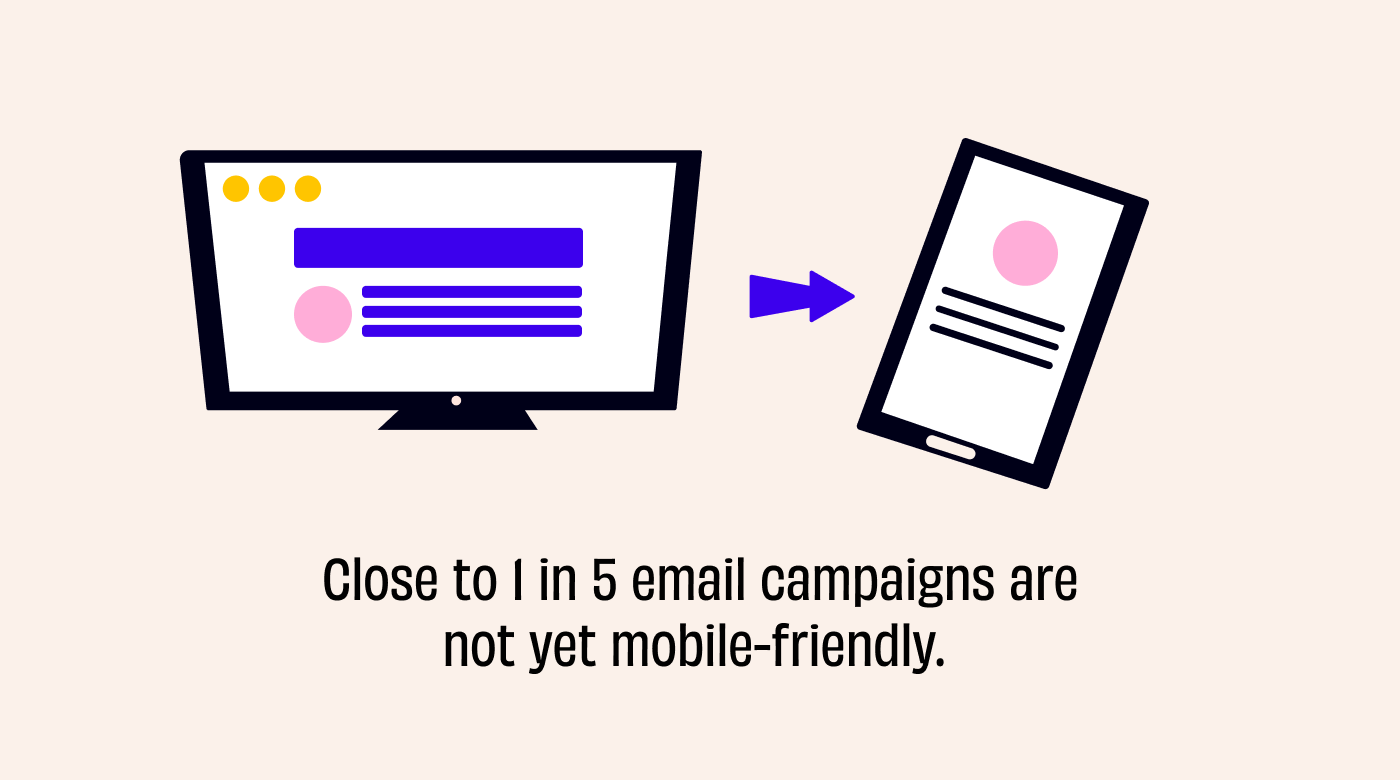
The move toward mobile email access has implications for companies that are already optimizing for phone viewing. The prevailing trends in email marketing may indicate that in the future business owners should consider taking additional steps to cater to mobile-first subscribers.

Obviously, an email designed for a computer screen can look overcrowded at best on a mobile device and increase the chances your email blast marketing campaign is moved to the bin. However, at worst, the functionality of CTA buttons can also be compromised by their scale. Now, there are both practical and aesthetic concerns when it comes to making emails mobile-friendly. So, let’s take a look at the difference between a mobile-friendly email, and its overcrowded counterpart:

See how the unoptimized design in this photo appears cluttered and unattractive? Your customers are more likely to interact with the mobile-friendly design. So, how do you design emails for mobile access? Well, here’s how to configure your emails for mobile inboxes:
- Responsive email designs leverage CSS media queries to automatically adjust email content to fit the users’ screen size. This makes it easier for email marketers to ensure that their messaging remains impactful regardless of where customers are touching base with the brand.
- Concise copy is generally best practice for email marketing across the board. Although it’s particularly important when attempting to avoid overcrowding on smaller screen sizes.
- Subject line lengths should remain short so mobile users can still be struck by your initial bid for attention.
- Preheader text gives you a little extra space on the mobile users’ screens to re-enforce your subject line messaging.
- Highlight the CTA to make it easy for mobile subscribers to click through.
- Space out links so that it’s easy for customers to click on specific items in your email without accidentally heading to the wrong page.
- Finally, A/B test your mobile designs!
8. Know which types of emails to send
One of the most fundamental email marketing strategies you can use to easily boost your KPIs is building your campaign around several effective messaging structures; namely three established categories: transactional, promotional, and lifecycle. In utilizing these email marketing categories, not only will you be able to leverage an established framework to make campaign planning easier, but you’ll also be able to tap into their proven success. So, to help you make the most of each email you send, let’s go over each category.

- Promotional Emails: Firstly, the simplest category is the promotional email, which is designed to boost the profile of a specific product, increase brand awareness, or highlight special offers and discounts. Personalization measures are especially important when it comes to promotional emails. Customers can feel spammed if frequent and personally irrelevant product offers are filling up their inbox and this may yield inactive subscribers. So, using promotional messages in conjunction with other email marketing efforts like customer purchasing data and audience segmentation will help you overcome these challenges. Also, if you can include discounts, deals, or offers, you further add value to your messages, and therefore can build more interest in your promotional emails over time.
- Transactional Emails: Now, let’s talk about transactional emails, which boast markedly high open rates of between 40–50%. This email category is generally triggered by an action from the customer such as a purchase. The customer will be expecting to receive messages like an order confirmation, shipping notification, and a customer feedback email. This email category naturally captures customers’ attention. So, how do you capitalize on this? Along with the expected information the customer is expecting, make sure to include enticing deals, upsells, brand information, and similar product suggestions.
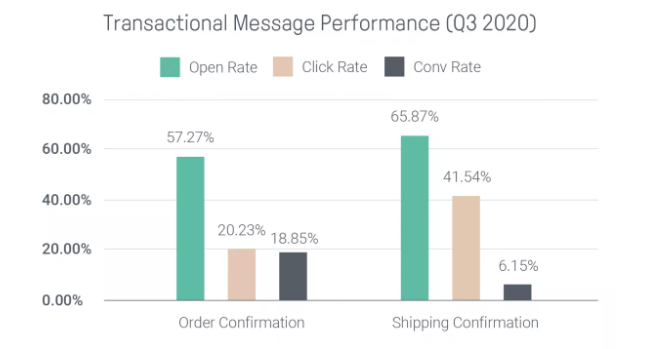
- Lifecycle Emails: The lifecycle email is a structured way of interacting with customers throughout different stages of their relationship with your brand. This category is designed to keep subscribers active throughout their time as your customer. Common implementations include welcome emails, post-purchase follow-ups, and re-engagement emails. One of the most impactful versions of lifecycle outreach is the abandoned cart email. This is because the cart abandonment rate sits at about 69.99%, and as these carts contain items hand-selected by the customers themselves, there's a greatly heightened sales potential inherent in a reminder email. Leverage this by offering deals like free shipping on the order. Or, on the other hand, get clever with your messaging, like this example from Dote:

9. Figure out your timing and frequency
The spam filter has long been the enemy of some email marketers. If you take a strategic approach to email marketing, it shouldn’t be. Both the timing and the frequency of your emails make a difference to customers. In fact, 51% of customers say they unsubscribe to email campaigns with excessive frequency. While, on the other hand, 90% of emails that received clicks were sent on weekdays. This means that both the amount of emails you send out to your list, and the time you send them are prime determiners of your campaign’s success.

So, how do you ensure that your customers are happy to hear from you? You might want to consider allowing subscribers to set their frequency preferences when they sign up for your emails. Not only will this help you build trust between the brand and the customer, but it'll also improve critical KPIs like engagement and unsubscribe rates.

Then, you’ll want to pay attention to when you schedule your emails because your timing has a direct impact on your KPIs. Now, nailing down the right timing for your brand can be a process of trial and error. Largely because every industry has statistically different optimal send times. For example, brands that are targeting working professionals will want to send their emails on weekends and evenings, while B2B companies will likely generate the best outcomes by sending emails during the workday. So, start by looking at the specific statistics surrounding email timing in your industry.
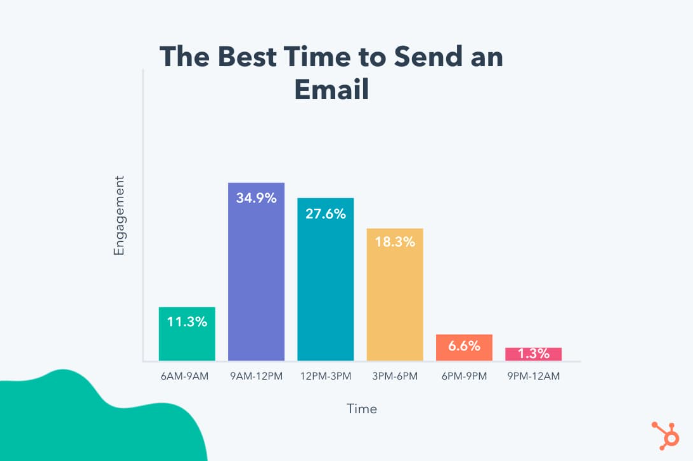
Once you’ve determined which times work best within your industry, it’s time to A/B test your brand email timing. This way, you can cater exactly to your customer base. Factors like frequency can also be A/B tested for your specific brand.
If you can figure out exactly when your customers are most receptive to your outreach efforts, your emails are going to generate much better KPIs like click-throughs and conversions. If you’re able to determine the optimal frequency, you can reduce unsubscribe rates and avoid being seen as spam by your customers.
Avoid These Email Marketing Mistakes
Sending Without Warming Your List
One of the most common mistakes I’ve seen—even among experienced marketers—is launching cold email campaigns without warming up the list. When email marketing platforms detect sudden spikes in volume, especially to unengaged contacts, it can tank your deliverability and hurt your sender reputation. I recommend gradually increasing your send volume to avoid emails going to spam, starting with your most engaged contacts. Email deliverability software can help pace this rollout while ensuring consistent engagement.
Over-emailing and Causing Unsubscribes
Maintaining customer loyalty isn’t about showing up in every inbox every day. It’s about showing up with the right message, at the right time. Over-emailing—especially without personalized value—can lead to fatigue and unsubscribes. Use marketing automation tools to set frequency caps based on behavior and lifecycle stage. Respecting your subscribers’ attention builds trust and long-term retention.
Skipping Deliverability Checks
Skipping deliverability testing is like launching a product without QA—it’s risky, and it shows. I always run test sends using tools built into email marketing platforms to check for spam triggers, blacklisted domains, and broken formatting. Simple things like incorrect font rendering across devices can affect how your messaging is received and whether it even gets opened. Invest time in QA workflows and use your platform’s analytics to catch issues before they impact performance. Your inbox placement depends on it.
Common FAQs about Email Strategy
How should you do B2B email marketing?
Focus on solving real business pain points with personalized, value-driven content. Use email campaign management strategies and analytics to tailor messaging across long sales. Check out our roundup of SaaS marketing campaign examples for real-world examples that boosted retention, conversions, and customer loyalty.
What should startups focus on when launching email marketing?
Startups should prioritize list building, message clarity, and smart automation. Explore these marketing strategies for startups to build a solid email foundation.
What are the 5 C's of email?
Clear, Concise, Compelling, Credible, and Conversational. These guide your tone, structure, and messaging to boost engagement and trust with email subscribers.
How can you increase email marketing performance?
Use segmentation, A/B testing, and automation to tailor the experience across the customer journey. Tools like email marketing analytics reveal what works and where to improve.
What is a hot list in email marketing?
A hot list is a segment of highly engaged or high-intent subscribers. It is ideal for conversions or time-sensitive campaigns. Use email tracking software to identify and prioritize them.
Maintaining Your Position in Your Target Audience's Inboxes
Every company is different, so finding your way forward might take some trial and error. In fact, A/B testing is all about trial and error.
The tiny tweaks you make to your email layout are proven to make a big difference. So, start by taking a look at your next template with a critical eye. Really tune into your customer. What email subject line would you click on? Why not test out something new? Questions like these can help you get creative with your next campaign.
Of course, you can use email strategies to get ahead of the competition. Although, maintaining your position in your customers’ inboxes requires keeping current with the latest insider information. And while you're refining your emails, don’t forget to explore alternatives to email marketing that might help you stand out where inbox fatigue is real.
The CMO is your curated guide to the latest news, technology, trends, and insights into the marketing industry. Click here to subscribe to The CMO newsletter or browse through our comprehensive catalog of marketing solutions.


